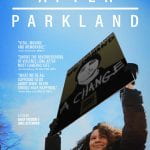On January 27th, 2023, the nuclear weapons group with me, Ajev, Tyler, and Erick had the chance to get a tour of the UN building led by Daniel Prins. He has worked at the United Nations for over 15 years now and is the Chief, Security Sector Reform, Department of Peace Operations at the United Nations; he previously was the Chief of the Office for Nuclear
We got to the UN building and met Daniel outside at around 9:00. We had to go through security, and when we were through, Daniel told us about the land the UN building was on and its history. The land that is now occupied with the UN building was previously a slaughterhouse owned by the Rockefeller family, and they decided to donate their 16 acres of land for the United Nations headquarters. The United Nations headquarters is geographically located in America, but it doesn’t belong to either America or New York. There aren’t NYPD police; instead, there are UN police, and the laws of the United States do not apply when you go to the UN headquarters. Even though it is located in America, it doesn’t belong to America and is the property of the world.
After we entered the UN building, Daniel brought us to the UN meeting room, but we were only there for a few minutes and we had to leave because they had to have all the seats checked for an upcoming meeting because it was Holocaust Memorial Day. Down the hall, he brought us to the disarmament room, where we saw landmines on display. There are also multiple kinds of land mines, such as ones that, if you step on them, blow up, and others that wouldn’t blow up but would cut off your legs, making it so that you were stuck there. There were also ones that wouldn’t react if you stepped on them, and they needed large and heavy vehicles, such as tanks, to explode them. There was a treaty made to stop the use of land mines, but some countries didn’t agree to that and can still use them.
The next part of the tour was about another weapon, and a treaty was made to remove all of them. These were chemical weapons or gases. These were extremely effective and would kill people who inhaled them in only a few seconds. However, this backfired a lot. There were some chemical weapons where you couldn’t see the smoke and wouldn’t know it was there. When you threw one of these, you couldn’t predict the direction of the wind, so sometimes the chemicals would come back and kill the person who threw it, as well as fellow allies. Sometime the wind would just push it in a totally different direction, and it wouldn’t affect anyone. A treaty was made for this that prohibits the use of chemical weapons and gases during war.
Another part of the disarmament room contained nuclear weapons. Daniel’s work with nuclear weapons was to prevent or slow down the increase in nuclear weapons. The TPNW (The Treaty on the Prohibition of Nuclear Weapons) makes it so that countries can’t test or use nuclear weapons except for a few select countries consisting of America, France, Russia, China, and Britain. Countries that didn’t sign this treaty can possess nuclear weapons, such as Pakistan, but the countries that did agree to it besides the 5 I listed can’t test or make nuclear weapons. After the bombings of Hiroshima and Nagasaki, the world believed that the only way to prevent a nuclear attack from happening again was to stop making and testing them, but this is extremely hard.
Not every country has to listen to someone when they say to stop making nuclear weapons, which is why treaties such as the TPNW were made. Other treaties were made, and one even made it so that you couldn’t test or store nuclear weapons on satellites in space. We saw the destructive damage the atomic bombs did to Hiroshima and Nagasaki and the people there, and nuclear weapons are thousands of times more powerful than those.
After looking at the nuclear section of the disarmament room, Daniel brought us to an area with a table and a few chairs (which were a gift to the UN), and we had the chance to interview him. The interview lasted around 15-20 minutes because he had to go to a meeting, but I still learned a lot. He explained how, if a country launched a nuclear weapon, it could use certain tactics to avoid punishment.We also asked him about the nuclear threat posed by some countries and the US’s relations with other nuclear-weapons states.
During the tour and the interview, my group and I learned a lot, and I’m really glad we got this opportunity. I’m also looking forward to doing more research on nuclear disarmament.
Read more

































































































